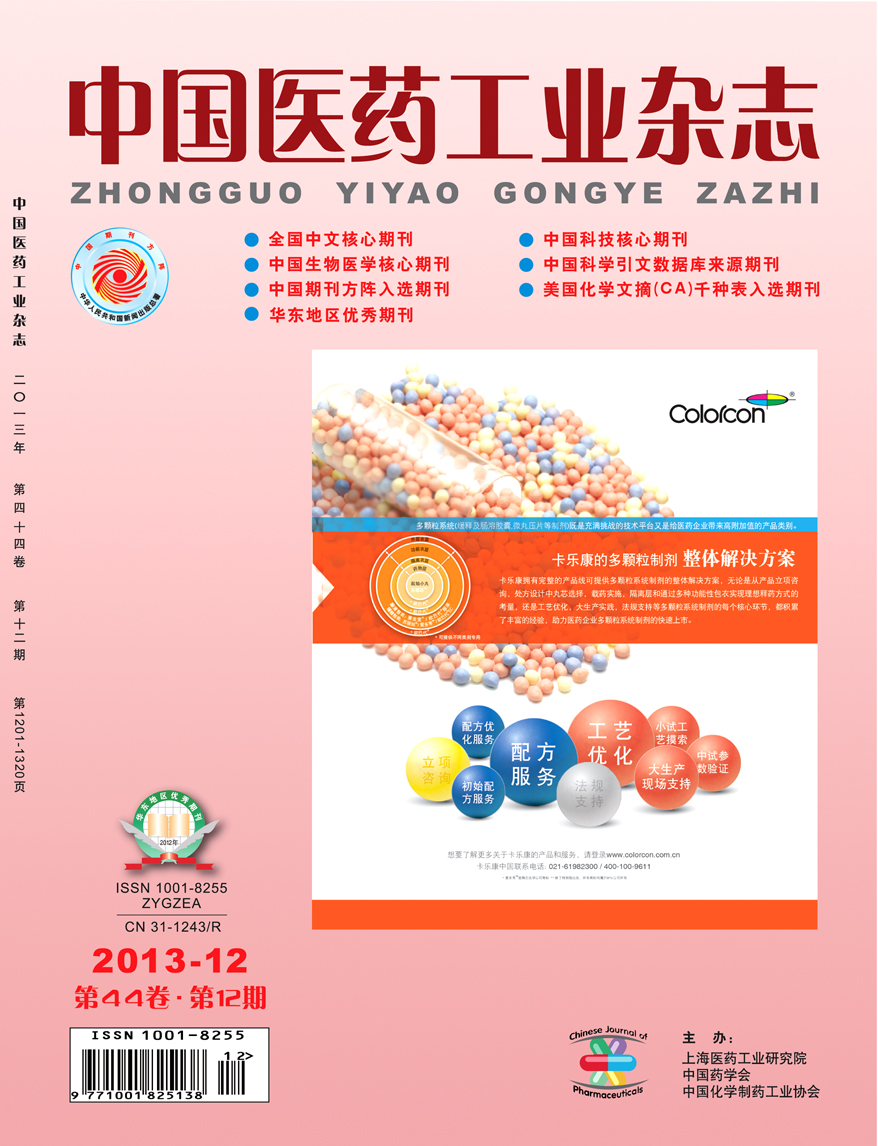CHEN Ang, SHI Ye, XI Lian, TAN Zounian, HE Fen*
2013, 44(12): 1253-1257.
A LC-MS/MS method was established for the determination of galantamine hydrobromide in Beagle dog plasma. According to a three period crossover study, the feeding and fasting pharmacokinetics of galantamine sustained-release suspension (test preparation) in Beagle dogs were studied with galantamine hydrobromide sustainedrelease capsules (Razadyne ER) as the reference preparation. Six Beagle dogs were divided into three groups, two
groups were in fed state and another was in fasting state. Dogs in fed groups were given a single dose of test or reference preparation at the dosage of 10 mg galantamine hydrobromide, and dogs in fasting group were given test preparation at the same dosage. The main pharmacokinetic parameters of above three groups were as follows: tmax (3.3±1.0), (3.2±1.0) and (2.2±0.4)h, cmax (63.0±3.4), (69.5±6.2) and (65.1±12.0)ng/ml, t1/2 (6.8±0.7), (5.6±0.7) and (5.1±2.1)h, AUC0→t (633.5±38.3), (657.2±76.9) and (557.1±36.7)ng·ml-1·h, AUC0→∞ (691.5±34.8), (698.1±81.3) and (595.9±70.4)ng·ml-1·h, MRT (7.5±0.1), (7.3±0.6) and (6.9±0.8)h, respectively.
